Alien Families
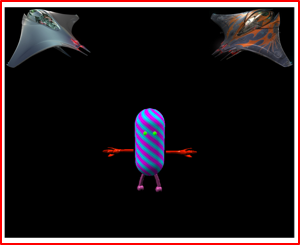
Aims
To look at whether children learn about category membership (where a cartoon alien lives) more efficiently when both visual and auditory information is provided together (multisensory), or with visual-only or auditory-only information (unisensory). Also, do children have a preferred sense? Does this affect their ability to use multisensory information and does this preference change with age?
Findings
The type of information children found most helpful changes with age. Five year olds learnt best with multisensory information (both visual and auditory together). Seven year olds’ learning was not infleunced by the type of information, they performed equally well in the multisensory and unisensory conditions. Ten year olds learnt most efficiently with only auditory information, compared to multisensory information or only visual information.
Alien Beanies
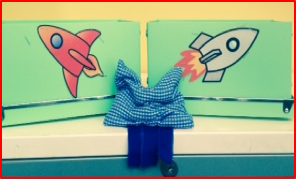
Aims
The aims of this study were the same as the Alien Families Study but were looking at multisensory learning using tactile and visual information.
Findings
All three age groups (5, 7 and 10 year olds) performed more poorly when given only visual information. All ages performed just as well with only tactile information as they did with multisensory information (both tactile and visual).
Frogs and Stars
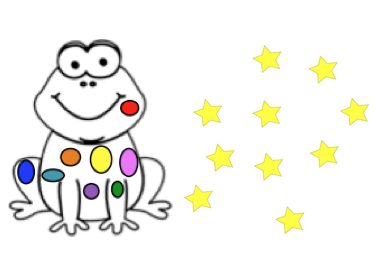
Aims
The “Frogs & Stars” study includes a series of games that investigate children’s incidental learning and sustained attention under high cognitive load, using different sensory information. This study aims to find out how children can hold their attention for two tasks at the same time, and how additional auditory, visual or auditory and visual information helps or hinders their incidental learning.
Findings
tbc
Catch the Frog
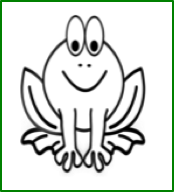
Aims
To investigate the effects of multisensory information on 5-9 year-old’s continued attention under different conditions. Children were asked to concentrate and catch cartoon frogs whilst ignoring other animals when presented with different types of information: only visual, only auditory, synchronous visual and auditory (at the same time), or asynchronous auditory-visual information (presented at slightly different times).
Findings
Visual and auditory information presented together (synchronous multisensory information) improved children’s learning compared to carrying out the task with only auditory information. However, when multisensory information was separated by a gap less than 1 second long (asynchronously), it helped all children’s learning more than synchronous multisensory information or just unisensory information.
Catch the Frog Distractors

Aims
The aims of the study were similar to the Catch the Frog study but also looked at the effect of unisensory and multisensory distractors on attention. While playing the Catch the Frog game, children were also presented with distracting animal sounds (auditory distractors), animal pictures (visual distractors), or animal pictures and sounds (multisensory audiovisual distractors).
Findings
Findings varied according to children's age. Nine year olds were more affected by visual distractors (shown by slower response) compared to no distractors than 5 year olds. However, 5 and 7 year olds made more inhibition errors (pressing when a frog was not presented) when there were multisensory distractors than when there were no distractors. All groups performed the worst (caught fewer frogs) on trials with audiovisual distractors.
Catch the Frog Families
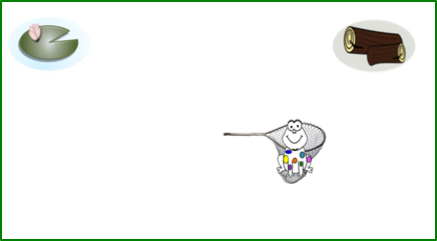
Aims
Here we aimed to look at children’s ability to ‘incidentally’ learn (learning without being explicitly told to do so) where frogs lived in the Catch the Frog game. The study also considered whether presenting children with multisensory cues about which types of frogs lived where (in the lilypad or log) on the attention task aided learning more than just visual or auditory cues alone.
Findings
Five, 7 and 10 year old children’s incidental learning of categories was helped by multisensory information more than with just auditory or visual cues. However, results were slightly different across the age groups. Five year old children found multisensory information more helpful than auditory information but not more helpful than visual information, suggesting that for them visual information is the most important. But 7 and 10 year old found multisensory information to be more helpful than only auditory or visual information.
Cross-Modal Task Switching (ongoing)

Aims
In the preschool years children often show remarkable development in attention control. In particular, the multisensory environment often requires children to be able to flexibly shift attention to different information in different senses, and to filter out any other irrelevant but attention-grabbing distractors. Appropriate attention shifting is essential to responding adaptively in a dynamic environment. But we understand very little of how preschoolers develop this control of attention shifting. Our research team is developing a series of studies designed to investigate their ability to switch attention between tasks in a multisensory environment.
Findings
Our initial study investigated attention control in a visual game with competing task rules. The result shows that 6 year olds are better than 4 year olds at shifting their attention between different visual targets. But 6 year olds level of attention control is still not at the same level as adults perhaps because they are less effective in holding task rules in mind. However, preschool children can be as effective as adults in handling multiple visual tasks.
Six year olds are similar to adults in the way they monitor their behaviours to environmental context (i.e. whether they are performing one or multiple visual tasks). Compared with 4 year olds, they are less led by the previous response (e.g. pressing the button) in the context of multiple task rules, in order to preserve the accuracy. This preservation of accuracy over speed facilitated by the previous response is also seen in adults and is known as the speed-accuracy trade-off.
Summary
Our research has started to provide insight into how multisensory information affects children’s attention differently across the primary school years, and how this may change depending on whether learning is explicit or incidental. It is not clear yet which type of sensory information is best for children's learning and how this changes with age, but it is likely to be context dependent.
